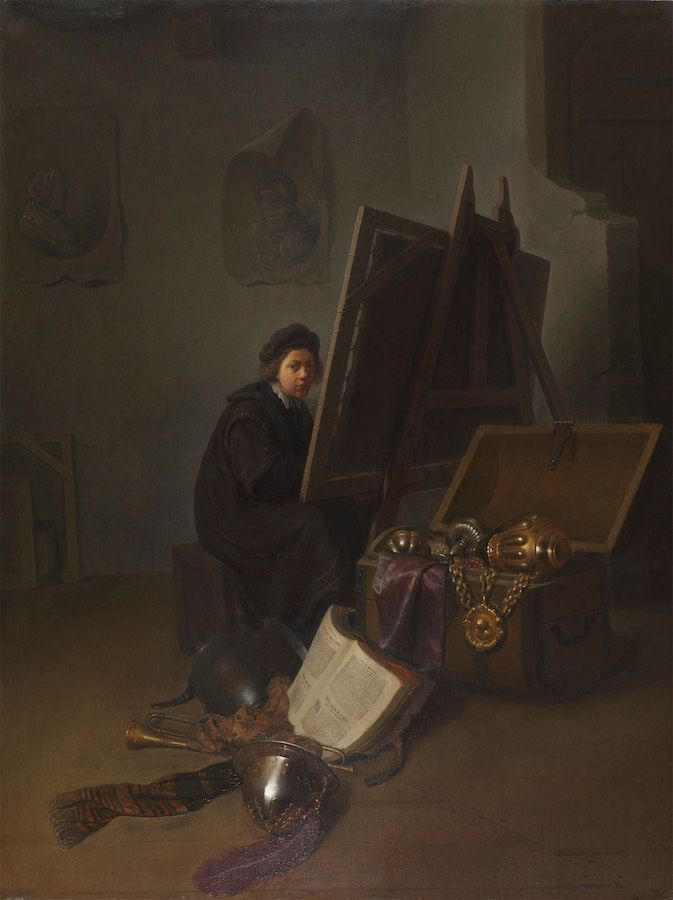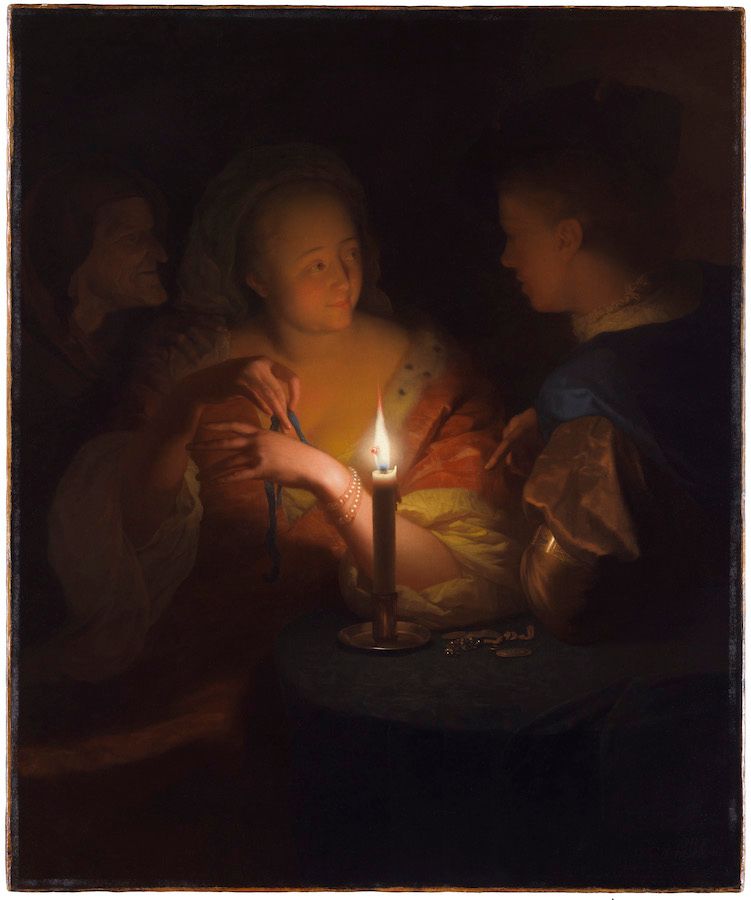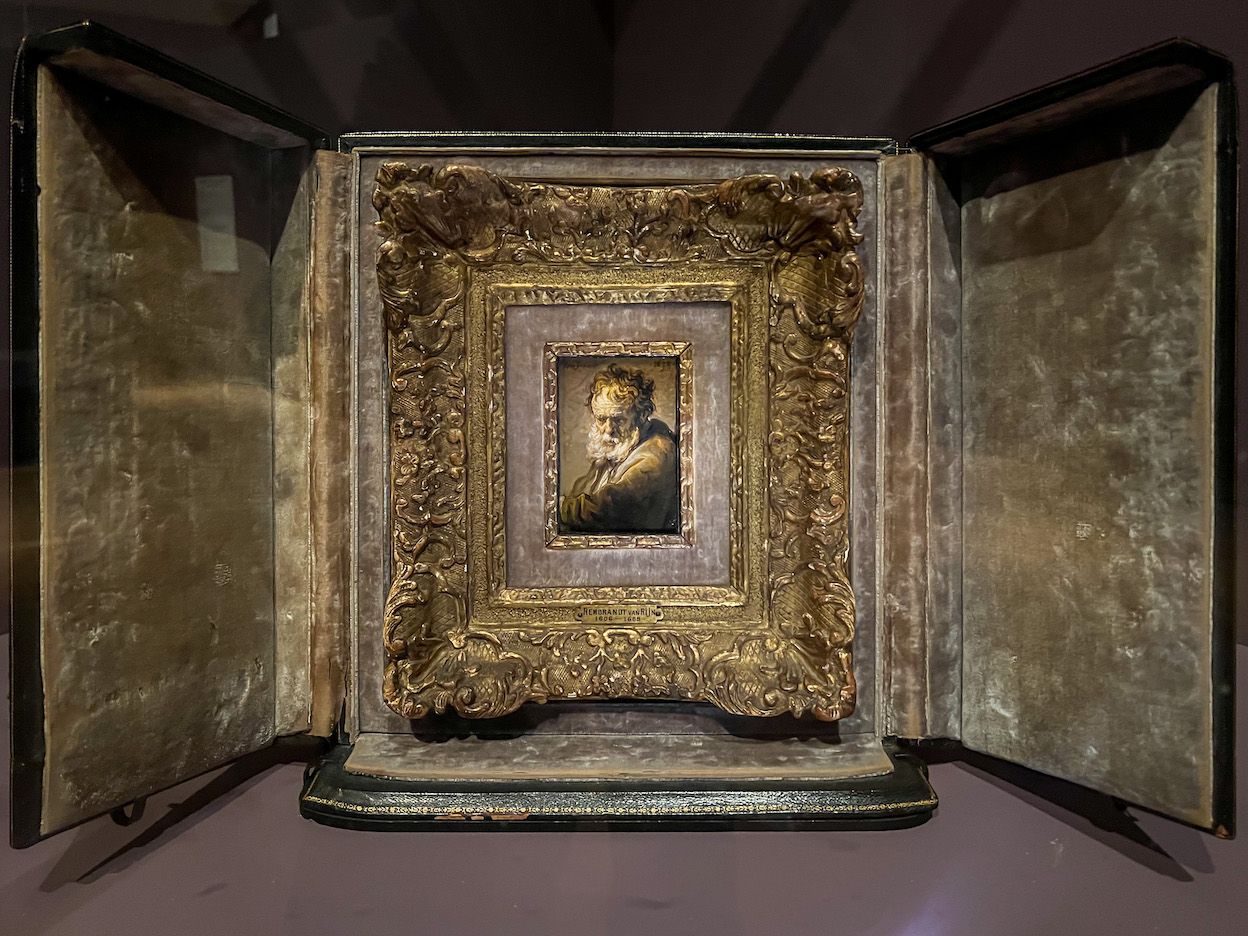

Gerrit Dou, Self-Portrait (?) at an Easel (1628-29) (left) and Godefridus Schalcken, Lovers (Prodigal Son) (1692-1706) (right)
Shortly after the Russian invasion of Ukraine in February 2022 the Hermitage Amsterdam severed ties with the State Hermitage Museum of Saint Petersburg. It should be noted that unlike the Guggenheim Bilbao and the Louvre Abu Dhabi the Hermitage Amsterdam was always an independent organization, it was never a subsidiary of the Hermitage in Saint Petersburg. It did have a partnership with the State Hermitage Museum of Saint Petersburg and over the years I’ve seen several exhibitions at the Hermitage Amsterdam with works from its namesake in St Petersburg.
The Hermitage Amsterdam has since reinvented itself as an international exhibition venue. The first exhibition was a collaboration with the National Portrait Gallery in London. In the future the Hermitage Amsterdam plans to organize more international collaborations of this kind. Until the end of August it is home to a selection of history paintings from the Leiden Collection.
The Leiden Collection is one of the largest and most important private collections of seventeenth-century Dutch art. It was assembled by the American philanthropist Thomas Kaplan and his wife, Daphne Recanati Kaplan, and currently consists of some 250 paintings and drawings by Rembrandt and several generations of his pupils.
In 2017 I visited a touring exhibition of Masterpieces of the Leiden Collection at the Louvre. The exhibition now at the Hermitage Amsterdam comprises a mostly different selection of works and focuses on history paintings. It includes works by Rembrandt, with his wonderful "Minerva in her Study" (1635) taking centre stage, as well as his teacher Pieter Lastman; his pupils Ferdinand Bol, Carel Fabritius and Arent de Gelder and contemporaries such as Caspar Netscher, Frans van Mieris and Jan Steen.
At the beginning of the 17th century history paintings, depicting scenes and subjects from the Bible, Greek and Roman mythology or classical history, was the most prestigious artistic genre. The Dutch painters of the 17th century sought to render history in a highly naturalistic way, which allowed viewers to relate to the stories and the figures represented in the paintings. History paintings were also an opportunity for painters to show their craftsmanship, at least, I don’t know how else to interpret the exotic fabrics in Caspar Netscher’s "Fortune Teller" (1666-70).
Even though the exhibition only includes 35 paintings there is much to enjoy. Many of the paintings were unfamiliar to me and some others I only knew as reproductions. I arrived shortly after the museum opened and for about an hour or so I had the exhibition almost to myself. I liked the "Self-Portrait (?) at an Easel" (1628-29) attributed to Gerrit Dou. The horizontal shape and size of the canvas indicate that the artist is composing a history scene. The artist has brought some props to the studio, including a large book, a helmet and some textiles. Interestingly the painter looks straight at us, the viewer. I also liked "Lovers (Prodigal Son)" (1692-1706) by Godefridus Schalcken with its wonderful play of light. I particularly enjoyed reading more about the meaning of the painting. For example, the light of the burning candle accentuates the intimacy of the scene and suggests that the encounter could not take place by the light of day.

The exhibition also includes the extraordinary "Bust of a Bearded Old Man" (1633), Rembrandt’s smallest known painting. It is fascinating to see how Rembrandt managed to give the old man a distinct character and expression, despite the painting's small size. The painting is encased in a travel box, which one of its former owners Andrew W. Mellon, who acquired the painting in 1928, had made, so he could take it with him and display it on his desk. A short video shows Thomas Kaplan taking the painting out of its encasing and its frame and holding it in his hands, which I found kind of amusing, because it is one of the most expensive paintings per square inch.
Rembrandt and his Contemporaries. History Paintings from The Leiden Collection is at the Hermitage Amsterdam until 27 August 2023.
Links
My review of Masterpieces of the Leiden Collection at the Louvre.
My review of Dutch Masters from the Hermitage.
My review of Matisse to Malevich. Pioneers of Modern Art from the Hermitage.